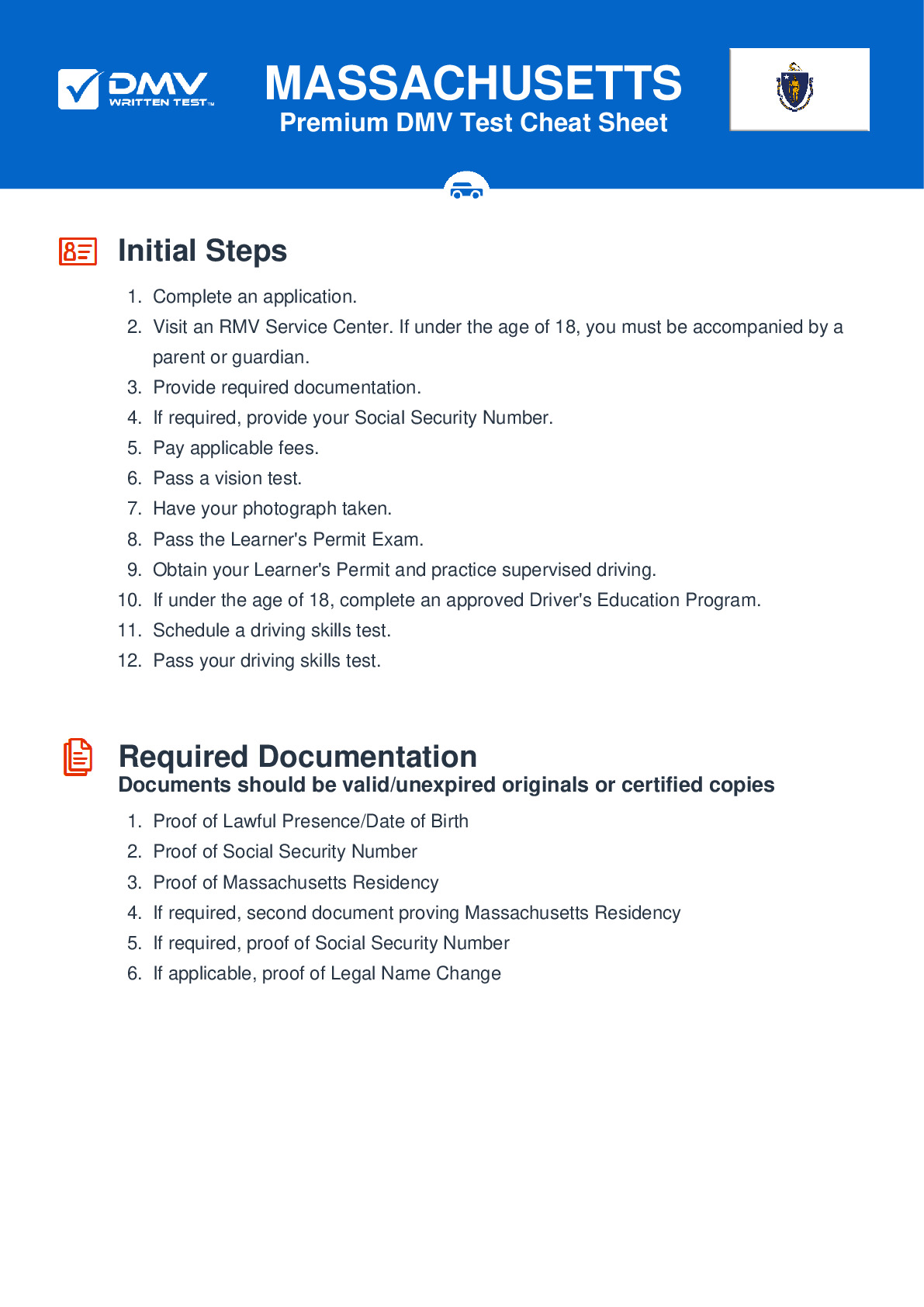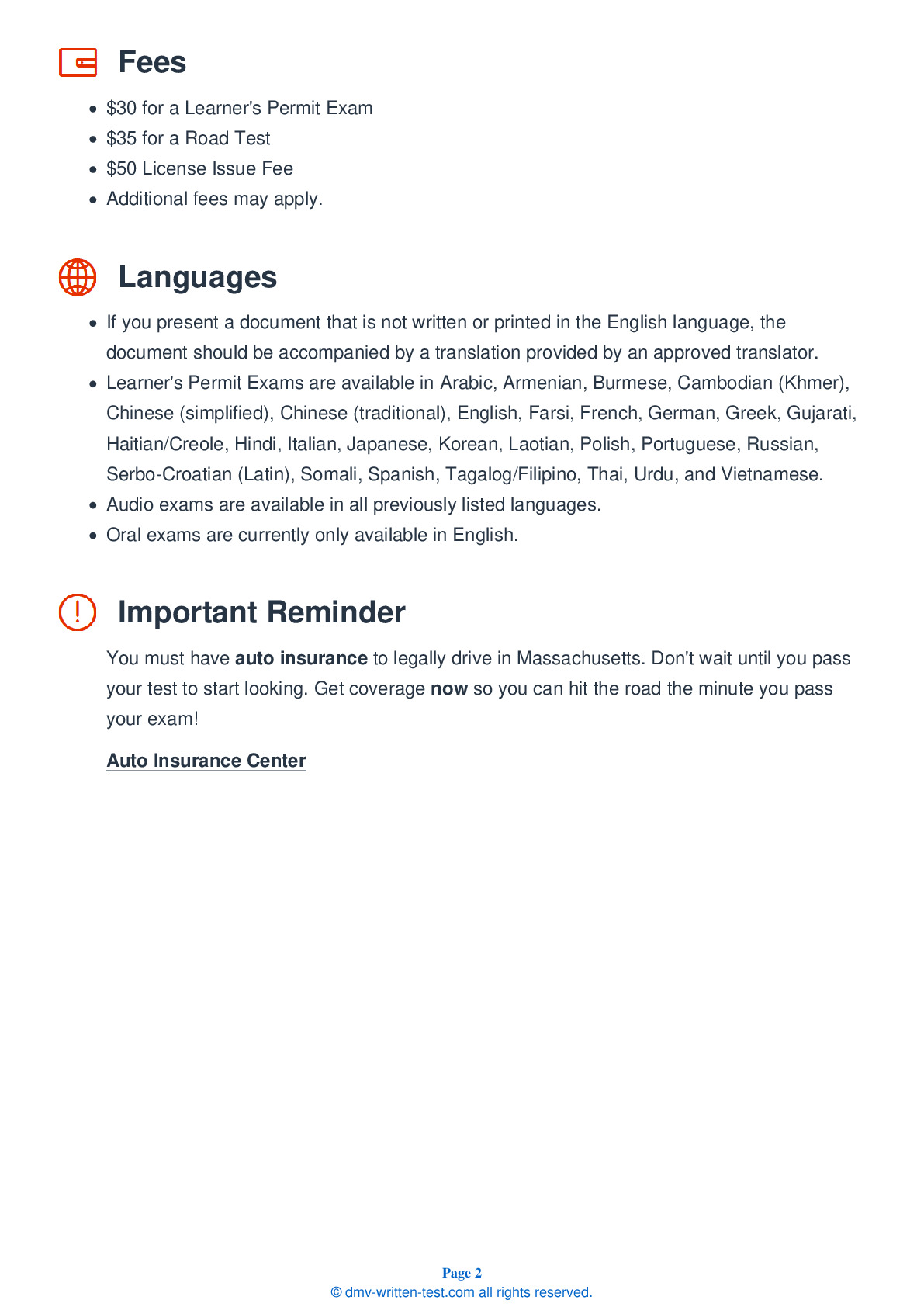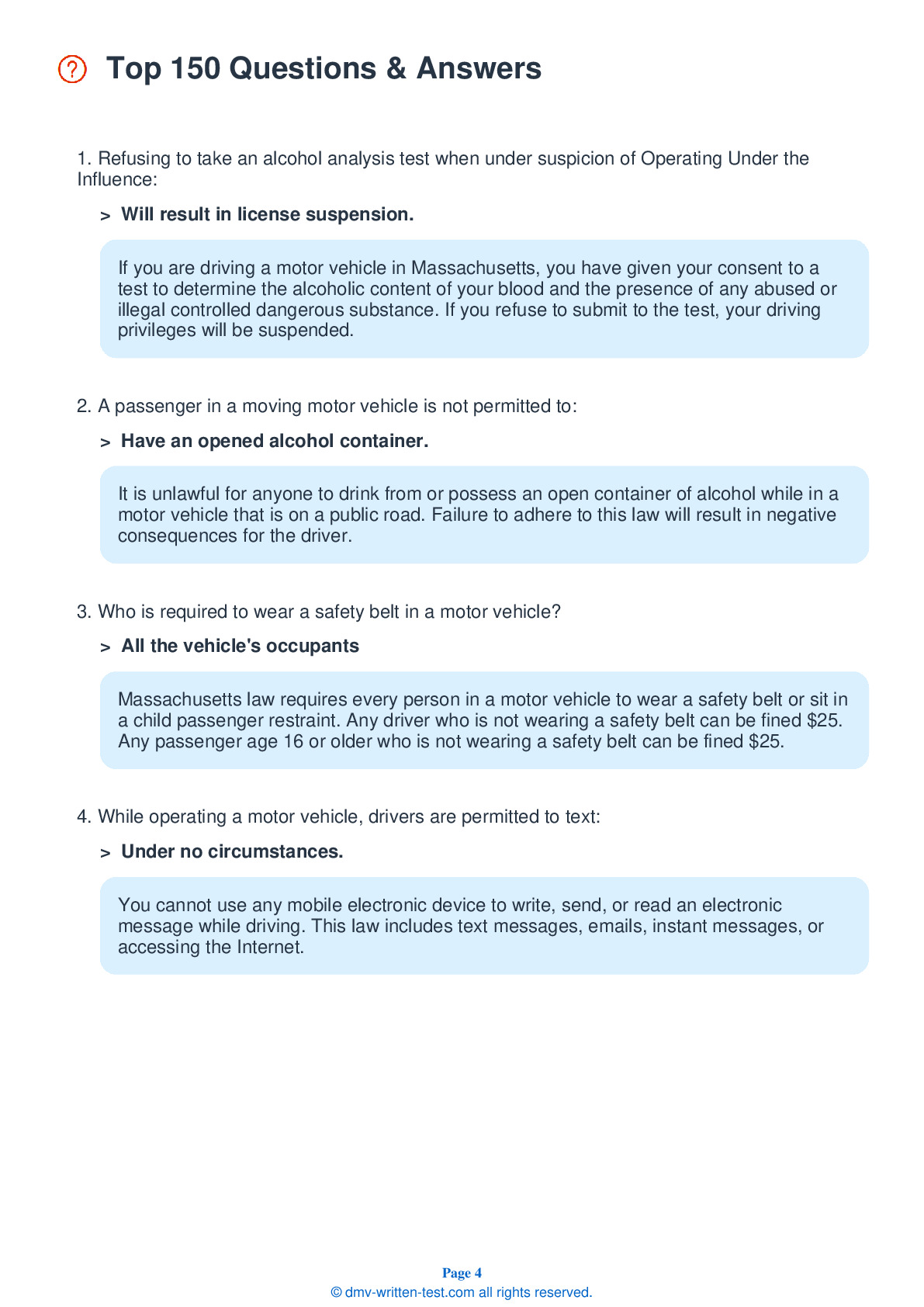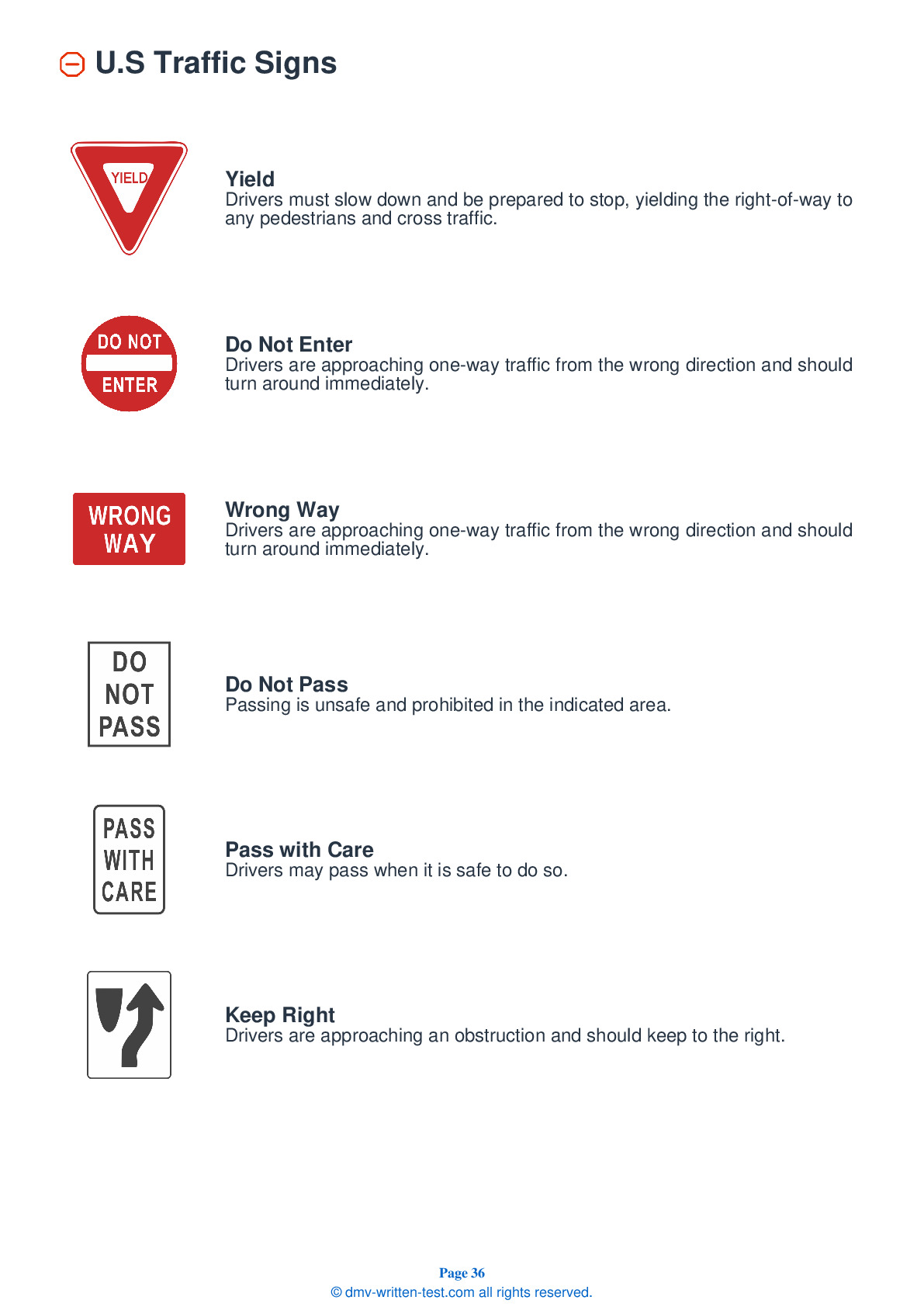2025 Massachusetts Permit Test 11
The following questions are from real DMV written tests. These are some of the actual permit questions you will face in Massachusetts. Each permit practice test question has three answer choices. Select one answer for each question and select "grade this section." You can find this button at the bottom of the drivers license quiz. For a complete list of questions and answers for Massachusetts please visit https://cheat-sheets.dmv-written-test.com/en/massachusetts/car.
Number of Tests
Number of Question
Passing Score
1. You must yield for emergency vehicles:
Explanation
You must yield the right-of-way to any emergency vehicle that is using its siren or flashing lights.
2. When should you use your high beam headlights?
Explanation
High beam headlights normally let you see about 350 feet ahead. Use your high beam headlights when driving in dark areas where you cannot see the road surface ahead. You must lower your high beam headlights to low beams when you are within 500 feet of an oncoming vehicle or within 200 feet of a vehicle traveling ahead of you.
3. “Highway hypnosis” is a driving condition that can result from:
Explanation
"Highway hypnosis” happens when you stare straight ahead at the roadway for long periods of time and stop actively scanning ahead, behind, and around your vehicle. This can lead you to zone out, making you very likely to crash into traffic slowing or stopping ahead of you.
4. When approaching a traffic signal displaying a flashing yellow arrow, drivers:
Explanation
A flashing yellow arrow indicates that left turns are allowed in the direction of the arrow. However, the oncoming traffic has a green light and you must yield to oncoming traffic and pedestrians.
6. Which of the following is true regarding seat belts and child restraints in vehicles?
Explanation





